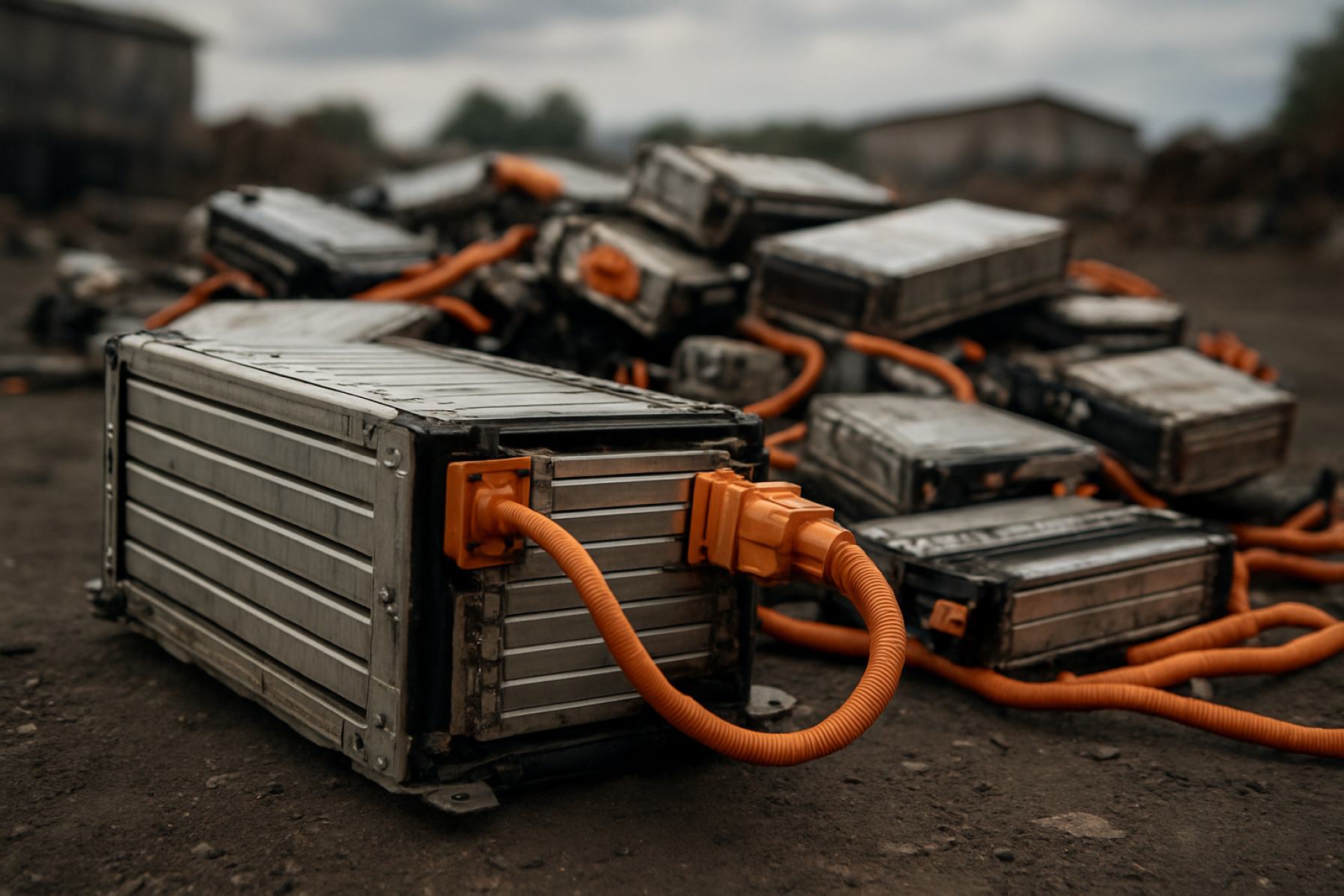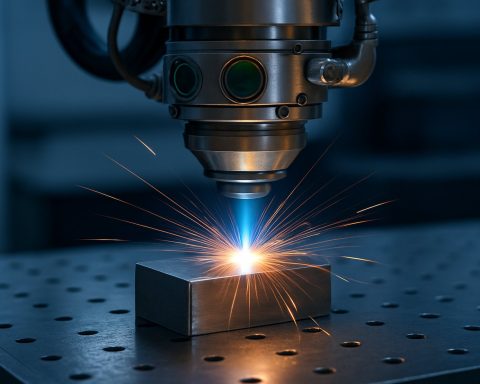- Electric vehicle (EV) batteries contain valuable minerals like lithium, cobalt, nickel, and graphite driving global supply chains and energy transition.
- After 10 years, most EV batteries still retain up to 80% capacity, enabling second-life uses such as home energy storage and grid stabilization.
- Advanced recycling techniques can recover up to 95% of essential minerals, reducing the need for new mining and supporting circular economy goals.
- Recycling and repurposing EV batteries can supply a significant share of Europe’s future cobalt, lithium, and nickel demand.
- Major challenges include complex recycling processes, safety risks, and the need for skilled labor and investment.
- Promoting battery reuse and recycling is crucial for environmental protection, ethical sourcing, and securing future energy resources.
Beneath the hoods of millions of electric vehicles, a quiet revolution is gaining momentum—one that extends far past the open road. As drivers plug in and power up, a challenge is building in garages and scrapyards around the world: what happens to EV batteries once their life behind the wheel fades? While most drivers don’t give this a second thought, a global race has begun to unlock the enormous, untapped value hidden in these high-tech leftovers.
Electric vehicle batteries are intricate mosaics of critical minerals—lithium, cobalt, nickel, graphite—that have grown as valuable as gold in the modern energy economy. Demand for these minerals now shapes geopolitics, with sprawling mines in Indonesia and the Democratic Republic of Congo feeding the insatiable supply chains of carmakers. As governments worldwide tighten emissions rules and automakers go all-in on electrification, forecasts hint that more than 20 million new EVs will roll off assembly lines in 2025 alone. Each battery, the size of a suitcase, contains materials harvested from deep beneath the earth at considerable human and environmental cost.
Yet as these batteries age, they’re far from drained of purpose. Most still retain anywhere from 60 to 80 percent of their original power after a decade—enough to light up homes, balance local grav-grids, or even serve as emergency backup. Ingenious startups and established players alike are now devising ways to test, sort, and repurpose aging packs: those with high remaining capacity are refurbished for a second spin in vehicles or downsized into e-bikes and scooters; middle-aged cells find new lives in stationary storage solutions, helping even out the unpredictable surges and lulls of renewable energy.
For batteries that have truly reached their final stop, a process not for the faint of heart takes over. Specialized plants shred spent cells into a gritty powder called “black mass”—a modern-day alchemy that separates out plastic and steel to reveal the raw, mineral-rich core. This dark powder is a motherlode of lithium, nickel, cobalt, and graphite—resources essential for a new generation of batteries. With the right technology, as much as 95 percent of these vital elements can be reclaimed and fed back into production.
The stakes are immense. Recycling just the batteries scrapped and discarded in Europe could, by 2030, satisfy up to a quarter of the continent’s cobalt demand and nearly a fifth of its lithium and nickel needs. Giants in the field are scaling up: North American firms are opening recycling hubs from Canada to Germany, while innovative companies in the UK and Asia are racing to close the loop on battery lifecycles.
But the path remains riddled with obstacles. The recycling process is notoriously complex, and building skilled workforces and modern plants takes significant investment. Safety concerns linger—damaged or defective batteries can catch fire if not handled correctly. Accurate data on battery health remains elusive, limiting the ability to maximize reuse and repurposing.
Still, one thing is clear: the world cannot afford to squander the rich bounty locked away in used EV batteries. Every pack recycled is a blow against environmental degradation, unethical mining, and supply chain volatility. As lawmakers and manufacturers recognize the urgency, policies and incentives will be key to fuelling an industrial-scale solution.
The next time an electric car silently glides past, consider this: its heart may beat on, powering homes, stabilizing the grid, and flowing back into the very vehicles of tomorrow. In the age of electrification, the line between waste and resource is blurring—and the real treasure is hiding in plain sight.
For more information on sustainable technology and global initiatives, visit the United Nations or explore energy industry updates at Bloomberg.
Key takeaway: Reusing and recycling EV batteries isn’t just good for the environment—it’s a critical move toward a sustainable, resource-secure, and ethically sound energy future.
Unlocking the Hidden Fortune in EV Batteries: What Happens After the Drive Ends?
# What Most EV Owners Don’t Know About Battery Life After the Road
Most electric vehicle (EV) owners think about range, charging, and cost—but few ask the crucial question: “What happens to my EV battery after it’s too weak for the road?” The answer isn’t just about waste or recycling. It’s about unlocking an untapped goldmine of critical minerals and second-life opportunities that can transform our energy landscape, lower environmental impacts, and even reshape global supply chains.
Below, uncover new facts, industry insights, forecasts, how-to steps, and real-world use cases about the next big thing in clean energy: the second act (and after-life) of EV batteries. Read on for actionable tips and answers to your most pressing questions.
—
Additional Facts and In-Depth Insights
1. Why EV Battery Recycling and Repurposing Matters More Than Ever
Unspoken Volume of Waste
According to the International Energy Agency (IEA), global EV adoption is expected to generate over 12 million tons of spent lithium-ion batteries by 2030, posing both a challenge and a $100 billion economic opportunity ([source](https://www.iea.org)).
Scarcity and Geopolitics
Rare raw materials like cobalt (around 70% mined in DR Congo) and lithium are dubbed “21st-century oil.” Their supply chains are increasingly vulnerable to international trade disputes and environmental concerns.
Energy Storage Revolution
Stationary energy storage (for homes and grids) using repurposed EV batteries can reduce the total cost of renewable systems by up to 30%, making green energy more accessible, according to McKinsey & Company.
—
2. How-To: The Journey of a Used EV Battery
Step-by-Step Lifecycle:
1. Collection: Spent batteries are gathered from vehicles, often by certified dealers or recycling agencies.
2. Diagnostic Testing: Each battery pack is tested for remaining State of Health (SoH). Packs above 70-80% SoH may be used for less demanding driving or resold for lower-power vehicles.
3. Disassembly/Sorting: Packs are broken down safely (preventing fire risk) and sorted into modules or individual cells.
4. Second-Life Applications: Batteries with moderate health are repurposed into stationary energy storage (solar, backup, etc.).
5. Recycling: Dead packs are shredded, processed into “black mass”—the feedstock for extracting lithium, cobalt, nickel, and graphite.
6. Recovery: Advanced hydrometallurgical processes extract up to 95% of key materials for new batteries.
7. Manufacturing Loop: Recovered minerals are fed back into battery manufacturing, reducing the need for fresh mining.
—
3. Life Hacks & Real-World Use Cases
– Home Power Backup: Nissan’s xStorage and Tesla’s Powerwall leverage repurposed batteries to provide affordable home backup, helping owners save during peak rates.
– Community Microgrids: Pilot programs in California and Japan use “retired” EV batteries to stabilize grid surges and provide low-cost, clean energy to remote communities.
– E-bike and Scooter Repowering: Several startups now offer kits to convert EV battery modules for smaller mobility devices, drastically cutting e-bike battery costs.
– Disaster Relief: Repurposed battery banks power emergency shelters after hurricanes and grid failures.
—
4. Market Forecasts & Industry Trends
– Explosive Market Growth: According to BloombergNEF, the global market for battery recycling and second-life applications will exceed $18 billion by 2030 ([source](https://about.bnef.com/)).
– Circular Economy Mandates: The EU’s new Battery Regulation requires, by 2031, that all EV batteries sold in Europe must contain at least 16% cobalt and 6% lithium from recycled sources, pushing industry-wide adoption.
– North American Expansion: Companies like Redwood Materials and Li-Cycle are investing billions in battery recycling “gigafactories” across the US and Canada.
—
5. Pros & Cons Overview
| Pros | Cons / Limitations |
|———————————————-|————————————————-|
| Reduces demand for new mining | Costly and complex recycling infrastructure |
| Cuts EV carbon footprint over lifecycle | Safety hazards (fires, toxicity) if mishandled |
| Creates jobs and new industrial ecosystems | Regulatory and logistics gaps in many regions |
| Provides grid and off-grid storage options | Challenges in tracking battery provenance |
| Supports national resource security | Some material losses still occur |
—
6. Controversies, Security & Sustainability
– Ethical Dilemmas: Ongoing controversy surrounds “greenwashing”—some companies overstate the recyclability of current battery tech. Full supply-chain transparency is key.
– Data Gaps: Without standard “passports” for EV batteries, tracking health and chemistry remains a hurdle ([World Economic Forum](https://www.weforum.org) calls for digital battery IDs).
– Safety & Regulation: Concerns over fires during storage/transport have led the US EPA and UN to call for stricter safety protocols and skilled workforce training.
—
7. Features, Specs & Pricing Snapshot
– Battery “Second Life” Packs: Typically retain 60-80% original capacity; ideal for non-mobility uses.
– Recycling Plant Capex: Up-front costs for modern plants can exceed $100M, justifying public/private partnerships.
– Raw Material Recovery: Up to 95% for nickel/cobalt; 60-80% for lithium due to technical limitations ([source: Nature Energy](https://www.nature.com)).
—
8. Tutorials & Compatibility
– Refurbishing Battery Packs: DIY not recommended due to high-voltage risks; always rely on certified professionals.
– Home Storage Integration: Systems like Tesla Powerwall are plug-and-play for solar arrays; compatibility with Smart Home APIs is increasing.
—
9. Reviews, Industry Comparisons & Innovation Leaders
– Redwood Materials (US): Praised for closed-loop model and partnership with Ford/Panasonic.
– Li-Cycle (Canada): High material-recovery rates, rapid North American expansion.
– CATL (China): World’s largest battery maker now pioneering automated sorting for second-life cell deployment.
—
Pressing Reader Questions: Expert Answers
How long can an EV battery be used in second-life applications?
Second-life batteries can serve for another 5–10 years in stationary storage due to lower stress cycles compared to automotive use.
Is battery recycling energy-intensive?
While some energy input is needed, advanced recycling methods (hydrometallurgical processes) use 60% less energy than traditional mining and have a lower carbon footprint.
What are the risks if batteries aren’t recycled?
Improper disposal can cause environmental pollution (leaching toxic metals), fire/explosion risks, and waste of critical resources.
Can I donate or sell my old EV battery for repurposing?
Many automakers offer trade-in or “take-back” programs; check with your brand and local certified recyclers ([see Toyota, Nissan, and Tesla programs at their respective portals](https://www.toyota.com), [https://www.nissanusa.com](https://www.nissanusa.com), [https://www.tesla.com](https://www.tesla.com)).
—
Actionable Recommendations & Quick Tips
For EV Owners:
– Ask your dealer about battery end-of-life programs before you buy.
– If upgrading, ask for documentation on your old battery’s condition to facilitate recycling or repurposing.
For Policymakers & Businesses:
– Invest in battery “passports” for lifecycle tracking and transparency.
– Support domestic recycling and refurbishing infrastructure for job creation and environmental gain.
For DIY Enthusiasts:
– Never attempt EV battery disassembly at home due to high voltage and fire risks!
– Look for community energy co-ops already deploying second-life batteries for grid support and consider membership.
—
The Bottom Line
In the race for clean energy, used EV batteries aren’t just hazardous waste—they’re the next big resource: cleaner backup for our homes, stabilizers for the grid, and the foundation for the next generation of vehicles. As business, policy, and technology align, the world can turn today’s environmental challenge into tomorrow’s sustainable treasure.
For continuous updates on energy technology and sustainability breakthroughs, check out the United Nations and Bloomberg.
—
Key Takeaway:
Reusing and recycling EV batteries is not only crucial for the environment but essential for future resource security, ethical manufacturing, and combating climate change. Be part of the solution—ask about your battery’s second life today!








